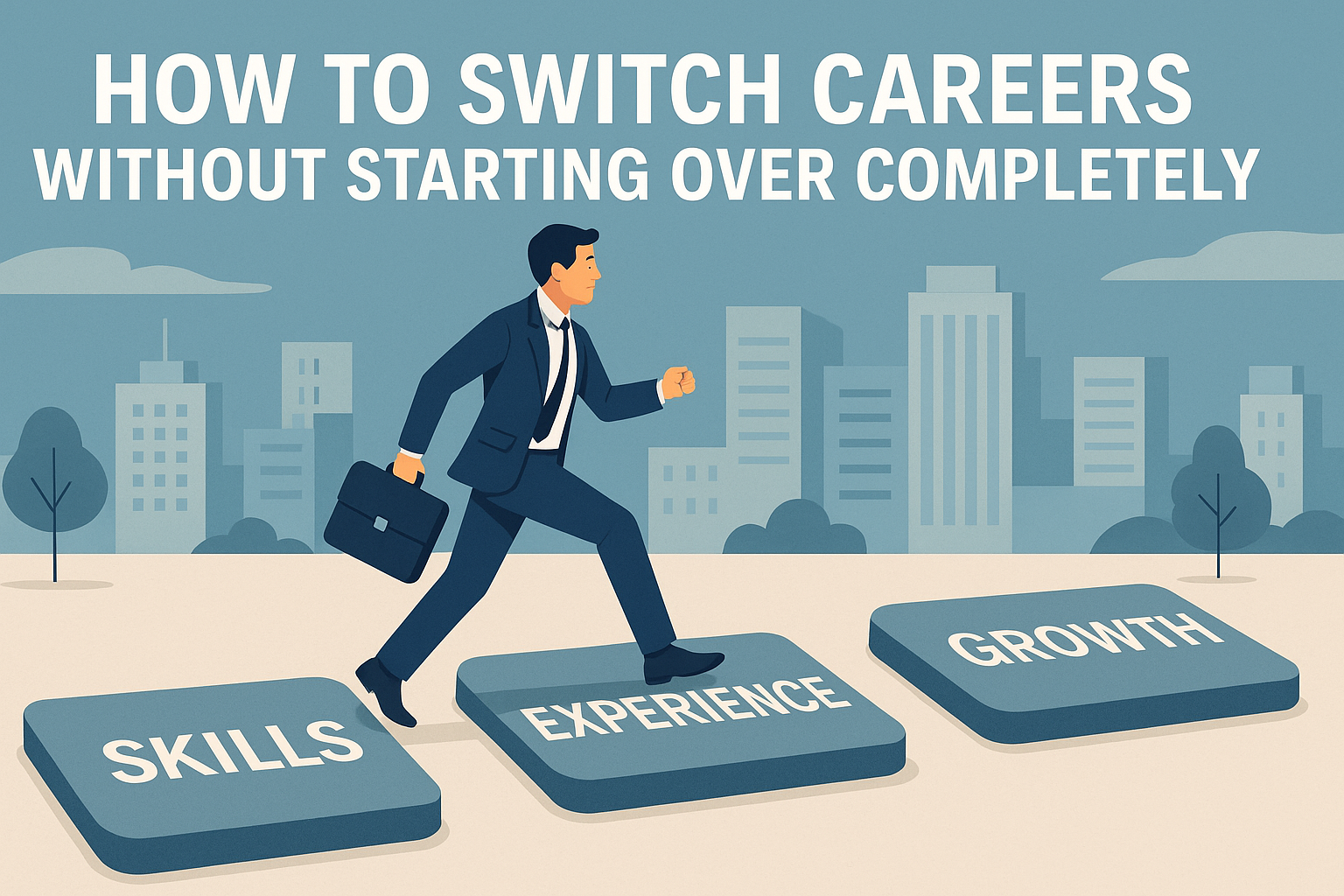Career change no longer requires beginning at square one. In today’s evolving job market, employers value adaptability, soft skills, and real-world accomplishments—attributes most professionals develop long before they ever consider switching fields. Whether you’re unhappy in your role, curious about emerging industries, or seeking a more fulfilling path, it is entirely possible to pivot without sacrificing the career capital you’ve spent years building.
The key is strategy. Instead of scrapping your experience, you learn to reframe it. Instead of obtaining an entirely new degree, you fill selective skill gaps. And instead of jumping blindly, you use informed, phased steps. This roadmap will help you transition into a new career efficiently and confidently.
Understand Your Motivation for Changing Careers
Before you rebrand your résumé or start networking, you need clarity on why you’re making the shift. This influences the direction you choose and the strategy you use.
Ask yourself:
- Are you seeking better pay, work-life balance, or job security?
- Are you moving away from burnout or toward passion?
- Are you responding to industry decline, or chasing new opportunity?
Knowing what matters most—flexibility, growth, creativity, impact—helps you choose a new field that aligns with your long-term goals, not just a temporary frustration.
Identify the Overlap Between Your Current Skills and Your New Industry
Most career changers underestimate how much their experience is already relevant.
Create a Skills Inventory
Divide your skills into:
- Technical skills (software, analytics, tools, systems)
- Soft skills (communication, leadership, customer management)
- Business competencies (budgeting, operations, strategy)
Then compare these with the common requirements of your target role. You’ll likely discover 40–70% overlap.
Review Career Pathways Reports
Many industries publish guides that map related or transferable careers. These can help you see how your background connects to new opportunities you may not have considered.
Fill Only the Gaps That Matter
A major mistake is enrolling in costly programs without researching what’s truly required. Most industries value demonstrable competence more than formal degrees.
Targeted Upskilling Options
- Micro-certifications to validate specific skills
- Mentorship programs with people already working in your target field
- Small freelance or volunteer projects to build credibility
- Shadowing or short-term internships for hands-on exposure
Focus on fast, applied learning that builds a portfolio or clear proof of skills.
Repackage Your Existing Experience
The way you present your story determines how hiring managers perceive your value.
Reframe Experience Using Industry Language
Take your past accomplishments and rewrite them using keywords from your new field. This not only boosts ATS compatibility but also signals alignment to employers.
Showcase Cross-Industry Strength
Hiring managers often value career changers because they bring:
- Fresh perspectives
- Broader problem-solving experience
- Stronger customer empathy
- Proven adaptability
Highlight these advantages instead of apologizing for your lack of direct experience.
Build a Bridge Through Networking
Career changers have a much higher success rate when they connect with professionals in their desired field.
How to Network Without Feeling Awkward
- Start by reconnecting with old colleagues—people who already know your strengths.
- Attend webinars and events where career changers are welcomed.
- Interact on LinkedIn by sharing insights from your upskilling journey.
You don’t need a massive network—just a few strong connections who understand your goals.
Leverage Bridge Roles to Accelerate the Shift
You don’t have to jump directly into your dream position. A transitional role can cut years off your learning curve.
Why Bridge Roles Work
- They reduce the experience gap.
- They help you learn industry tools and culture.
- They allow you to showcase your existing skills in a new context.
Think of them as stepping stones—strategic, temporary, and incredibly effective.
Create a Portfolio That Demonstrates Your Value
Even if your target field isn’t traditionally portfolio-driven, showcasing examples of your work builds credibility.
Examples of Useful Portfolio Elements
- Mock projects
- Case studies
- Data analysis samples
- Writing or communication pieces
- Process improvements you implemented
A portfolio turns “I can do this” into “Here’s proof.”
Prepare for a Learning Curve—Not a Restart
You may need to accept slightly different titles, responsibilities, or salary bands at first. But this is a curve, not a reset.
Expect the First 6–12 Months To Include:
- Learning industry language
- Mastering new tools
- Building new relationships
With consistency, most career changers fully regain—and often surpass—their previous earning potential within 18–24 months.
FAQs
What if I don’t know which career I want yet?
Start by evaluating industries that align with your values, strengths, and long-term goals. Career assessments can help narrow your options.
Is switching careers risky?
It can be, but strategic planning—combined with networking and upskilling—dramatically reduces the risk.
How do I know if a bootcamp or certificate is worth it?
Check whether job listings in your target field frequently mention the credential. If not, a portfolio or project experience may be more valuable.

